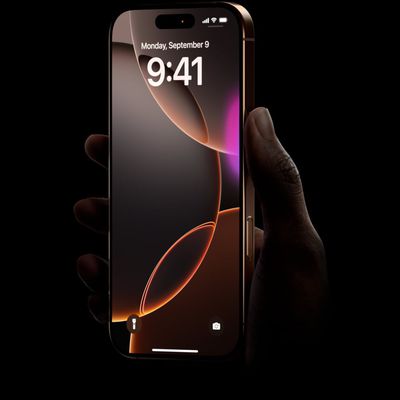Samsung and TSMC iPhone 6s Chips Show Smaller Real-World Battery Impacts Compared to Benchmarks
The news that Apple dual sourced its A9 chips for the iPhone 6s and iPhone 6s Plus has been a point of discussion over the past few weeks, especially when new battery tests on the phones pointed towards the TSMC chips outperforming those made by Samsung. Following the news, several YouTubers have begun creating videos to compare the dual sourced chips in both battery-straining tests and basic real-world scenarios.
In the first video, Austin Evans compared identical models of the iPhone 6s -- one with the Samsung chip and one with the TSMC chip -- and calibrated their screens so they had the exact same brightness. After running the GeekBench 3 battery test until they both ran down to 50 percent battery life, Evans discovered that the TSMC iPhone 6s lasted fifty minutes longer than the Samsung version, "resulting in a nearly 1.5 times difference in battery life." Thermal imaging also showed the Samsung device running hotter than the TSMC version.
Evans also ran a lighter battery test, playing the same hour-long YouTube video on each device to see how a more day-to-day scenario would affect each chip. In the end, he saw only a one percentage point difference in battery drain, noting that while heavy-use cases could see the TSMC chips come out on top, highlighting the differences between benchmarks and real-world usage.
The next video is from
Jonathan Morrison, who compared each chip by running a 30-minute timelapse with all the same settings and brightness running on each device. After the test, the Samsung iPhone 6s was down to 84 percent battery, while the TSMC version came in on top with 89 percent remaining. Morrison continued testing the battery strength of each chip with a ten-minute 4k video test, exporting the video file in iMovie, and finishing off by running GeekBench 3. At the end of the full set of tests, the iPhone with the Samsung chip was at 55 percent battery while the TSMC device was at 62 percent.
The takeaway from Morrison and Evans' videos today seems to be that while intense cases like synthetic Geekbench tests designed to push devices to their limits revealed as high as a 22% difference in battery life between devices using the two chips, real-world impacts may be much smaller depending on the mix of activities. In these specific usage patterns shown above, battery life differences between the two processors ranged from 6% to 11%.
Popular Stories
A new Apple TV is expected to be released later this year, and a handful of new features and changes have been rumored for the device.
Below, we recap what to expect from the next Apple TV, according to rumors.
Rumors
Faster Wi-Fi Support
The next Apple TV will be equipped with Apple's own combined Wi-Fi and Bluetooth chip, according to Bloomberg's Mark Gurman. He said the chip supports ...
Apple will launch its new iPhone 17 series in two months, and the iPhone 17 Pro models are expected to get a new design for the rear casing and the camera area. But more significant changes to the lineup are not expected until next year, when the iPhone 18 models arrive.
If you're thinking of trading in your iPhone for this year's latest, consider the following features rumored to be coming...
Apple's next-generation iPhone 17 Pro and iPhone 17 Pro Max are only two months away, and there are plenty of rumors about the devices.
Below, we recap key changes rumored for the iPhone 17 Pro models.
Latest Rumors
These rumors surfaced in June and July:A redesigned Dynamic Island: It has been rumored that all iPhone 17 models will have a redesigned Dynamic Island interface — it might ...
The long wait for an Apple Watch Ultra 3 is nearly over, and a handful of new features and changes have been rumored for the device.
Below, we recap what to expect from the Apple Watch Ultra 3:Satellite connectivity for sending and receiving text messages when Wi-Fi and cellular coverage is unavailable
5G support, up from LTE on the Apple Watch Ultra 2
Likely a wide-angle OLED display that ...
iPhone 17 Pro and iPhone 17 Pro Max models with displays made by BOE will be sold exclusively in China, according to a new report.
Last week, it emerged that Chinese display manufacturer BOE was aggressively ramping up its OLED production capacity for future iPhone models as part of a plan to recapture a major role in Apple's supply chain.
Now, tech news aggregator Jukan Choi reports...
The iOS 26 public beta release is quickly approaching, while developers have recently gotten their hands on a third round of betas that has seen Apple continue to tweak features, design, and functionality.
We're also continuing to hear rumors about the iPhone 17 lineup that is now just about right around the corner, while Apple's latest big-budget film appears to be taking off, so read on...




















